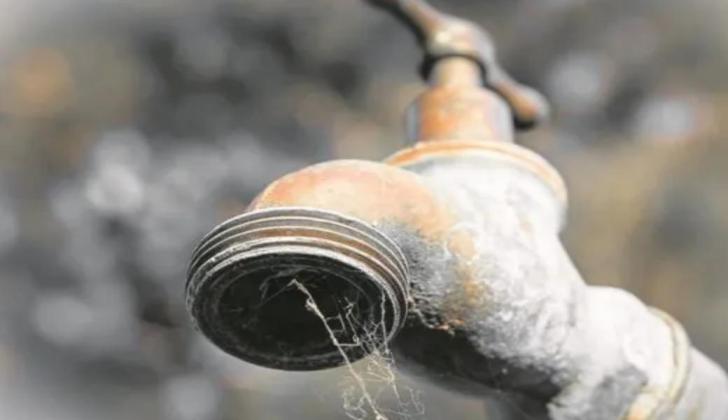News / National
Bulawayo City Council maintains water shedding
05 Feb 2025 at 12:01hrs |
0 Views

Bulawayo City Council (BCC) has announced that the city's water-shedding regime will remain in place, despite recent heavy rains and the recommissioning of uMzingwane Dam. The move comes as the council continues to manage the city's water crisis, with many residents, especially in high-lying areas, having gone months without receiving water supplies.
The city had previously decommissioned uMzingwane and Upper Ncema dams in late 2023 due to low water levels, leading to the implementation of a stringent water-shedding regime. Despite the recent rains, the council's Town Clerk, Christopher Dube, explained that water levels in the city's reservoirs have not significantly improved to lift the restrictions.
"Although the recent rains have led to a 13.87% increase in overall dam water levels since November 4, 2024, the current levels in the city's dams remain far below the required threshold," Dube said in a statement. "As such, we must continue our water conservation efforts and adhere strictly to the existing water-shedding schedule."
Currently, the council is drawing water from uMzingwane Dam, which has received inflows of 16,571,560 cubic meters of water and is 34.67% full. This dam was decommissioned in November 2023 when it was at a critically low level of 3.95%. The council began drawing water from the dam on January 3, 2025, and estimates that the depletion of its water reserves will occur by December 2025.
Upper Ncema Dam remains decommissioned after water levels dropped to 2.08% in October 2024. While the dam has received 13,738,580 cubic meters of inflows since the rainy season began, it is currently 33.21% full. Dube noted that the Upper Ncema Dam, located on the same river system as the Lower Ncema Dam, is considered a reserve reservoir and water abstraction is only possible via the Lower Ncema Dam.
The Zimbabwe National Water Authority (ZINWA) recently revealed that despite heavy rainfall in other parts of Matabeleland, water supply dams in Bulawayo have received lower-than-expected inflows. According to ZINWA's report as of January 29, 2025, the current dam levels are as follows: Mtshabezi (66.8%), Insiza (42.6%), uMzingwane (34.7%), Upper Ncema (33.9%), Lower Ncema (7%), and Inyankuni (9.8%).
Dube highlighted that the ongoing water-shedding measures are part of efforts to conserve water and ensure that the available supply lasts as long as possible. "Given the current situation, it is crucial for all residents to continue adhering to water usage restrictions, as the available water resources remain limited," he urged.
The Matabeleland Zambezi Water Project, a long-term solution to Bulawayo's perennial water shortages, continues to be a priority. First proposed in 1912, the project aims to provide a more sustainable and reliable water supply to the city and surrounding areas. However, its completion remains a work in progress, and the city must continue to manage its existing resources carefully in the interim.
As the city navigates this ongoing water crisis, residents are urged to practice water conservation and stay informed on updates from the council regarding the water-shedding schedule.
The city had previously decommissioned uMzingwane and Upper Ncema dams in late 2023 due to low water levels, leading to the implementation of a stringent water-shedding regime. Despite the recent rains, the council's Town Clerk, Christopher Dube, explained that water levels in the city's reservoirs have not significantly improved to lift the restrictions.
"Although the recent rains have led to a 13.87% increase in overall dam water levels since November 4, 2024, the current levels in the city's dams remain far below the required threshold," Dube said in a statement. "As such, we must continue our water conservation efforts and adhere strictly to the existing water-shedding schedule."
Currently, the council is drawing water from uMzingwane Dam, which has received inflows of 16,571,560 cubic meters of water and is 34.67% full. This dam was decommissioned in November 2023 when it was at a critically low level of 3.95%. The council began drawing water from the dam on January 3, 2025, and estimates that the depletion of its water reserves will occur by December 2025.
The Zimbabwe National Water Authority (ZINWA) recently revealed that despite heavy rainfall in other parts of Matabeleland, water supply dams in Bulawayo have received lower-than-expected inflows. According to ZINWA's report as of January 29, 2025, the current dam levels are as follows: Mtshabezi (66.8%), Insiza (42.6%), uMzingwane (34.7%), Upper Ncema (33.9%), Lower Ncema (7%), and Inyankuni (9.8%).
Dube highlighted that the ongoing water-shedding measures are part of efforts to conserve water and ensure that the available supply lasts as long as possible. "Given the current situation, it is crucial for all residents to continue adhering to water usage restrictions, as the available water resources remain limited," he urged.
The Matabeleland Zambezi Water Project, a long-term solution to Bulawayo's perennial water shortages, continues to be a priority. First proposed in 1912, the project aims to provide a more sustainable and reliable water supply to the city and surrounding areas. However, its completion remains a work in progress, and the city must continue to manage its existing resources carefully in the interim.
As the city navigates this ongoing water crisis, residents are urged to practice water conservation and stay informed on updates from the council regarding the water-shedding schedule.
Source - newsday
Join the discussion
Loading comments…





























